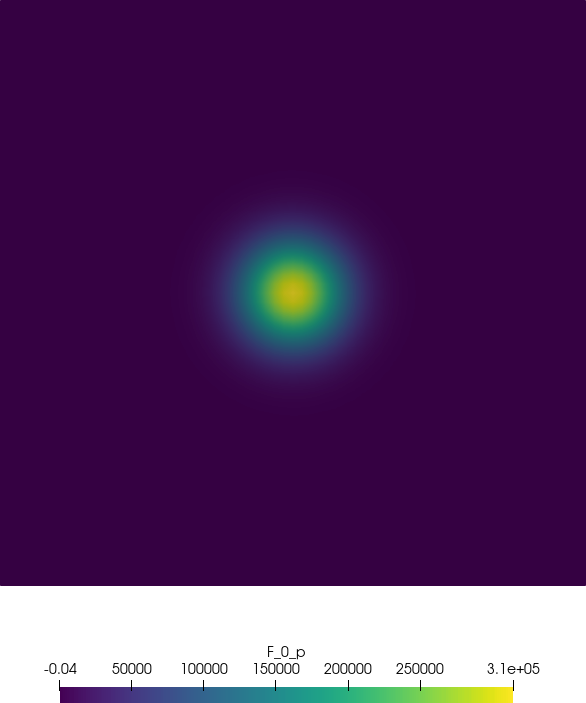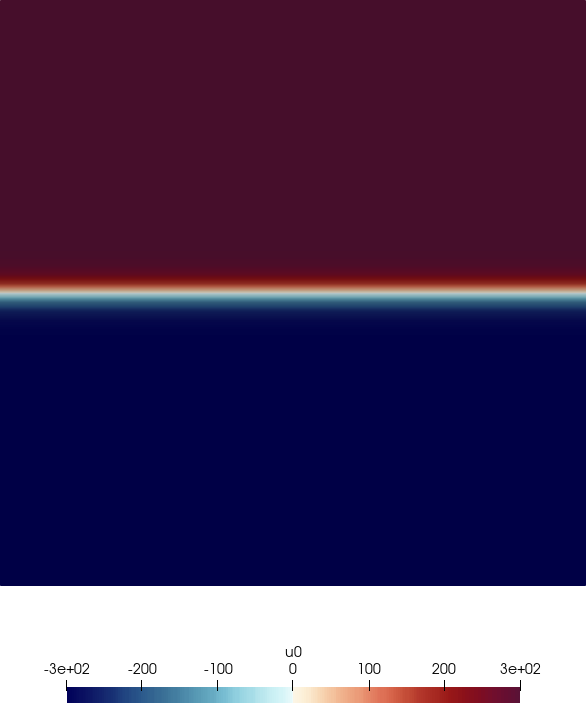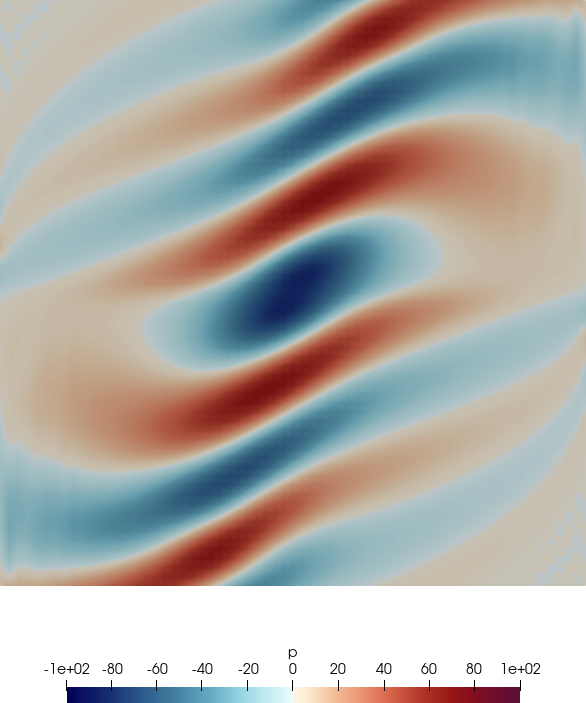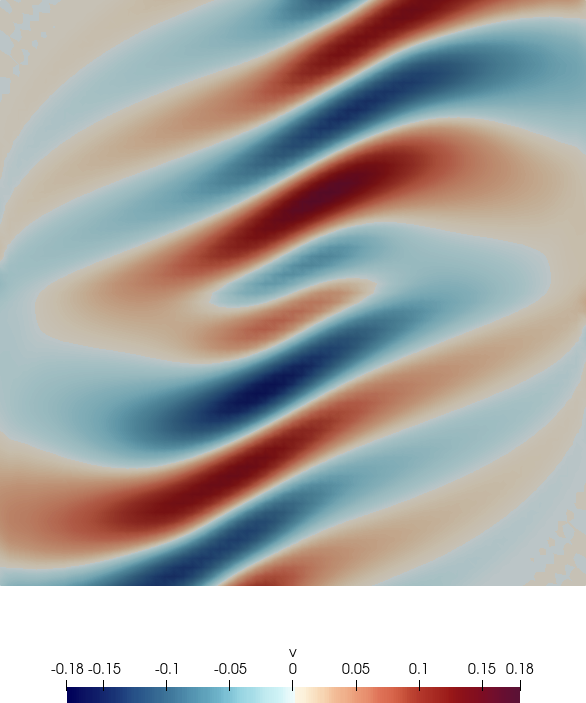In this section we explain how to set up a simple, 2D simulation of aeroacoustics in Nektar++.
We will study the propagation of an acoustic wave in the simple case of a sheared base flow,
i.e. u = T, c2 =
2, ρ = 1.204kg∕m3. The geometry consists of 64
quadrilateral elements.
We require a discontinuous Galerkin projection and use an explicit fourth-order Runge-Kutta time integration scheme. We therefore set the following time integration schem and solver information:
1<TIMEINTEGRATIONSCHEME> 2 <METHOD> RungeKutta </METHOD> 3 <ORDER> 4 </ORDER> 4</TIMEINTEGRATIONSCHEME> 5 6<SOLVERINFO> 7 <I PROPERTY="EQType" VALUE="APE"/> 8 <I PROPERTY="Projection" VALUE="DisContinuous"/> 9 <I PROPERTY="UpwindType" VALUE="LaxFriedrichs"/> 10</SOLVERINFO>
To maintain numerical stability we must use a small time-step. Finally, we set the density, heat ratio and ambient pressure.
1<PARAMETERS> 2 <P> TimeStep = 1e-05 </P> 3 <P> NumSteps = 1000 </P> 4 <P> FinTime = TimeStep*NumSteps </P> 5 <P> IO_InfoSteps = 10 </P> 6</PARAMETERS>
The initial condition and the base flow field are specified by the Baseflow and
InitialConditions functions, respectively:
1<FUNCTION NAME="Baseflow"> 2 <E VAR="u0" VALUE="300 * tanh(2*y/0.1)"/> 3 <E VAR="v0" VALUE="0"/> 4 <E VAR="c0sq" VALUE="1.4 * Pinfinity / Rho0"/> 5 <E VAR="rho0" VALUE="Rho0"/> 6</FUNCTION> 7<FUNCTION NAME="InitialConditions"> 8 <E VAR="p" VALUE="0"/> 9 <E VAR="u" VALUE="0"/> 10 <E VAR="v" VALUE="0"/> 11</FUNCTION>
At all four boundaries the RiemannInvariantBC condition is used:
1<BOUNDARYCONDITIONS> 2 <REGION REF="0"> 3 <D VAR="p" USERDEFINEDTYPE="RiemannInvariantBC"/> 4 <D VAR="u" USERDEFINEDTYPE="RiemannInvariantBC"/> 5 <D VAR="v" USERDEFINEDTYPE="RiemannInvariantBC"/> 6 </REGION> 7</BOUNDARYCONDITIONS>
The system is excited via an acoustic source term c, which is modeled by a field forcing as:
1<FORCING> 2 <FORCE TYPE="Field"> 3 <FIELDFORCE> Source <FIELDFORCE/> 4 </FORCE> 5</FORCING>
and the corresponding function
1<FUNCTION NAME="Source"> 2 <E VAR="p" VALUE="100 * 2*PI*5E2 * cos(2*PI*5E2 * t) * exp(-32*(x^2+y^2))"/> 3 <E VAR="u" VALUE="0"/> 4 <E VAR="v" VALUE="0"/> 5</FUNCTION>
AcousticSolver Test_pulse.xml
Fig. 6.1 shows the acoustic source term, the velocity and the acoustic pressure and velocity perturbations at a single time step.



